Create a Cozy Winter Wonderland While Saving on Energy Costs
As the cold winter months approach and frost begins to blanket the ground, the desire to retreat into the warmth and comfort of your home becomes paramount. However, the rising costs of heating during this season can make it challenging for budget-conscious individuals to maintain a cozy atmosphere. Fortunately, there are numerous energy-saving strategies that allow you to transform your home into a winter paradise without breaking the bank. This article is designed to equip you with practical tips and proven methods to ensure your home remains warm while keeping energy expenses manageable throughout the winter season.

Identify and Seal Air Leaks for Enhanced Energy Efficiency
A significant amount of heat loss in homes occurs due to unnoticed air leaks. Identifying and sealing these gaps can vastly improve your home’s energy efficiency and reduce heating costs. This comprehensive guide will help you locate and address air leaks around vents, windows, and doors effectively:
- Windows:
- Inspect for Drafts: During windy days, thoroughly check the perimeter of your windows for any drafts. You can use a candle or incense stick to detect subtle air movements that indicate leaks.
- Apply Weatherstripping: Utilize weatherstripping materials—such as adhesive-backed foam or V-strip—to create a tight seal around window frames. Selecting the right type based on your windows is crucial for effective insulation.
- Doors:
- Check for Gaps: Closely examine the edges of your doors for visible gaps that may allow cold air to seep in. A well-lit room at night can help reveal any leaks through these openings.
- Install Door Sweeps and Weatherstripping: Employ door sweeps at the bottom of doors to block drafts and use self-adhesive weatherstrips along the sides to seal any gaps effectively.
- Vents and Ducts:
- Seal Ductwork: Ensure that your ductwork is properly sealed to prevent warm air from escaping into unconditioned spaces. Use a mastic sealer or foil tape to secure any loose connections.
- Install Vent Covers: Using magnetic or adhesive vent covers can effectively control airflow and minimize drafts in less frequently used rooms.
- Caulking and Sealant:
- Inspect Exterior Walls: Examine the outer walls of your home for cracks or holes. Apply caulk or sealant to fill any gaps, preventing air and moisture intrusion.
- Select the Right Sealant: Choose the appropriate sealant based on the location and material. Silicone is ideal for flexible joints, while acrylic caulk works well for indoor applications.
- Utilize Draft Stoppers:
- Place Along Door Bottoms: Use draft stoppers, also known as door snakes, to block cold air from entering through the bottom of doors. These fabric tubes can be easily positioned or removed as needed.
- Seek Professional Assistance:
- Consider Energy Audits: Hiring a professional for an energy audit can be beneficial. Experts use advanced tools like thermal imaging cameras to identify hidden leaks and recommend tailored solutions for your home.
Regular inspections and prompt repairs of discovered air leaks not only enhance your home’s overall comfort but also significantly boost energy efficiency. By proactively sealing these gaps, you can lower your energy bills and create a more inviting living environment throughout the winter months.
Maximize Natural Sunlight for Warmth and Ambiance
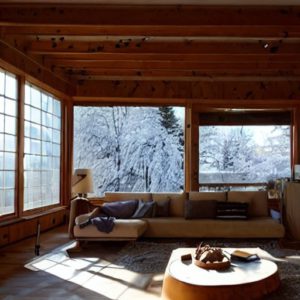 Utilizing natural sunlight during the winter can greatly enhance the warmth and atmosphere of your home. Here’s a detailed exploration of effective strategies to harness daylight:
Utilizing natural sunlight during the winter can greatly enhance the warmth and atmosphere of your home. Here’s a detailed exploration of effective strategies to harness daylight:
- Daylight Utilization Strategies:
- Strategic Curtain Management: Keep curtains and blinds open during daylight hours to allow natural sunlight to flood your living areas. Position them to fully expose windows and let sunshine penetrate deeper into your rooms.
- Choose Sheer Fabrics: If privacy is a concern, consider using sheer curtains that allow sunlight to filter in while maintaining some level of seclusion. The diffusion of light through sheer materials creates a warm and inviting atmosphere.
- Solar Heat Gain:
- Understanding Solar Heat: Sunlight that enters your home can contribute to solar heat gain, particularly through south-facing windows that receive more sunlight in winter. This can be advantageous for warming your space.
- Utilize South-Facing Windows: Prioritize opening curtains and blinds on south-facing windows to maximize sunlight exposure, especially beneficial in chillier climates.
- Nighttime Heat Retention:
- Close Curtains at Night: As temperatures drop in the evening, closing drapes and blinds helps to insulate your home, preserving the warmth collected throughout the day. Opt for heavier drapes or those with thermal lining for better insulation.
- Invest in Insulated Window Treatments: Consider adding insulated drapes or shades to further minimize heat loss, effectively creating an additional barrier against cold air.
- Ambiance and Well-Being:
- Enhance Indoor Lighting: Natural sunlight not only warms your home but also improves indoor lighting quality, reducing reliance on artificial lighting during the day. This lowers energy consumption and can positively impact your electricity bills.
- Incorporate Biophilic Design: Exposure to natural light has been linked to improved well-being. Allowing sunlight into your living areas can positively influence your mood and productivity levels.
- Window Maintenance:
- Clean Windows Regularly: Ensure that windows are cleaned frequently to maximize sunlight entry. Regularly remove dust and debris from both the interior and exterior to prevent obstructions that can limit natural light.
- Smart Home Technology:
- Consider Automated Window Treatments: Think about installing smart window treatments that can automatically open and close based on predetermined schedules, optimizing sunlight exposure and heat retention without manual adjustments.
Incorporating these tactics into your winter routine enables you to fully leverage the benefits of natural sunlight, crafting a warm and inviting ambiance in your home while also enhancing energy efficiency. By optimizing window treatments and understanding solar heat gain, you can significantly improve comfort and atmosphere during the colder months.
Ensure Adequate Insulation for Enhanced Energy Efficiency
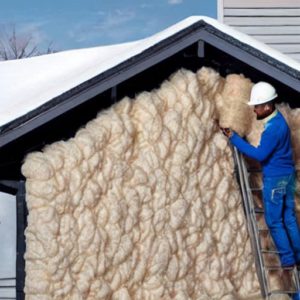 Proper insulation is crucial for minimizing heat loss and improving the overall energy efficiency of your home. Creating a comprehensive insulation plan focused on key areas, such as the attic, walls, and basement, will lead to a warmer and more cost-effective living environment.
Proper insulation is crucial for minimizing heat loss and improving the overall energy efficiency of your home. Creating a comprehensive insulation plan focused on key areas, such as the attic, walls, and basement, will lead to a warmer and more cost-effective living environment.
Begin by assessing the insulation levels in your attic. Adequate insulation in this area prevents heat from escaping through the roof, acting as a vital barrier. Various insulation materials, such as fiberglass, cellulose, and foam board, offer different levels of effectiveness. Consulting with a professional can help you determine the most suitable insulation type and thickness for your attic.
Next, ensure that your walls are well-insulated to create a continuous thermal envelope around your home. Proper wall insulation helps regulate indoor temperatures by preventing heat from escaping through exterior surfaces. Insulation in exterior walls serves as a buffer against outdoor temperature fluctuations, making this a priority for energy efficiency.
While insulating your basement, pay attention to both the walls and ceiling, if applicable. Uninsulated basements, which are often in close contact with the ground, can be a major source of heat loss. Use materials like rigid foam boards or spray foam insulation to insulate basement walls effectively. If the basement ceiling is unfinished, insulating it creates a thermal barrier between the basement and the living areas above.
When selecting insulation materials, consider the R-value, which measures heat resistance. Higher R-values indicate better insulation performance. However, the ideal R-value may vary based on factors such as climate, local building codes, and specific application areas.
In addition to adequate insulation, ensure that your home is properly sealed to prevent air leaks that can compromise insulation effectiveness. Avoid letting conditioned air escape through gaps around windows, doors, and other potential openings.
Investing in quality insulation not only helps retain warmth but also leads to significant savings on heating bills in the long run. The initial investment in insulation pays dividends over time by reducing the need for constant heating and enhancing energy efficiency.
For a thorough assessment, consider consulting insulation professionals or energy auditors. They can provide tailored recommendations based on your home’s unique characteristics, ensuring your insulation strategy aligns with both your energy-efficiency goals and the specific requirements of your living space.
Optimize Comfort with a Programmable Thermostat
 Investing in a programmable thermostat is a proactive measure to optimize your home’s energy consumption. This intelligent device allows for flexible and automated temperature control, significantly enhancing your comfort while also saving on energy costs.
Investing in a programmable thermostat is a proactive measure to optimize your home’s energy consumption. This intelligent device allows for flexible and automated temperature control, significantly enhancing your comfort while also saving on energy costs.
Automated Temperature Adjustments: One of the key benefits of a programmable thermostat is its ability to adapt to your daily schedule. By pre-setting temperature adjustments based on your routine, you can ensure that your home is efficiently heated, avoiding unnecessary energy waste when it is not needed.
Energy Savings through Setback Settings: Programmable thermostats allow you to implement setback settings during times when you are away or asleep. Lowering the temperature during these periods helps prevent your heating system from overworking. According to the U.S. Department of Energy, reducing the temperature by just one degree can lead to savings of up to three percent on home heating costs.
Tailored Comfort Levels: These devices let you customize temperature settings to meet your preferences. You can program the thermostat to warm your home just before you return, ensuring a comfortable environment upon arrival. This personalized approach enhances both energy efficiency and your overall satisfaction with your home’s climate.
Optimizing Heating Cycles: With a programmable thermostat, you can achieve more efficient heating cycles. The system operates with greater precision, reducing energy waste while maintaining consistent temperatures during occupied times and adjusting them when the home is unoccupied.
Smart Thermostats and Connectivity: The advancement of technology has introduced smart thermostats, which offer advanced features such as remote management via smartphone apps and integration with home automation systems. These functions provide unprecedented control and energy management capabilities, allowing you to monitor and adjust your home’s temperature even when you’re away.
Installation and Compatibility: Installing a programmable thermostat is generally a straightforward process, with many models compatible with existing heating systems. However, it is essential to choose a thermostat that fits your HVAC system and meets your home’s specific needs.
Considerations for Usage: While programmable thermostats are highly effective, careful programming is essential to maximize their benefits. Understanding your daily routine and adjusting the settings accordingly ensures that the thermostat operates in harmony with your lifestyle.
Embrace Layering for Ultimate Comfort
 To enhance your comfort during winter, consider the straightforward yet effective approach of personal layering before resorting to adjusting the thermostat. This strategy not only helps reduce energy costs but also creates a more pleasant indoor environment, giving you greater control over your comfort.
To enhance your comfort during winter, consider the straightforward yet effective approach of personal layering before resorting to adjusting the thermostat. This strategy not only helps reduce energy costs but also creates a more pleasant indoor environment, giving you greater control over your comfort.
Clothing as Insulation: Think of your clothing as an additional layer of insulation for your body. Wearing cozy sweaters, thermal socks, and comfortable slippers creates a barrier against the cold, allowing for warmth without solely relying on heating systems. Opt for materials like wool and fleece, known for their excellent insulating properties.
Footwear Matters: Cold feet can significantly diminish your comfort indoors. Invest in insulated slippers or warm socks to keep your feet cozy. This simple change not only enhances warmth but also reduces the need to raise the thermostat temperature to compensate for chilly extremities.
Layering for Bedtime Comfort: Extend the layering concept to your bedding. Instead of immediately cranking up the thermostat at bedtime, use additional blankets to create layers on your bed. Combining lightweight and heavier blankets allows you to customize the layers to your comfort needs, creating a warm cocoon for sleeping.
Understanding the Science of Layering: Layering is a time-tested technique that focuses on conserving and capturing body heat. Each layer traps warm air, enhancing overall insulation. By mimicking the natural way our bodies regulate temperature, you can maintain comfort with less reliance on artificial heating.
Benefits Beyond Energy Savings: Mastering layering offers advantages beyond energy conservation. It promotes an eco-friendly lifestyle by minimizing the carbon footprint associated with higher heating needs. Additionally, layering adds a sense of coziness and control over your environment, allowing for a personalized warmth.
Seasonal Wardrobe Transition: As winter approaches, consider incorporating additional insulating items into your wardrobe. Look for thicker fabrics, thermal undergarments, and accessories like scarves and gloves. By adapting your clothing to the changing seasons, you’ll be better prepared for a winter that is both comfortable and energy-efficient.
Mindful Thermostat Adjustments: Incorporating layering into your routine allows you to approach thermostat adjustments more mindfully. Even minor changes, such as lowering the temperature by a few degrees, become achievable when paired with the added warmth offered by layered clothing and bedding.
Regular Maintenance of Your Heating System
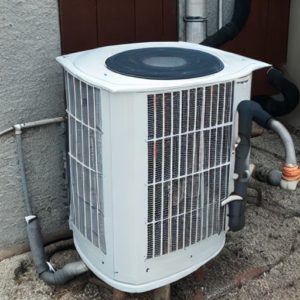 A well-maintained heating system is essential for achieving a comfortable indoor temperature throughout winter and minimizing energy expenses. Prioritizing regular maintenance and professional servicing ensures your heating system operates at peak efficiency.
A well-maintained heating system is essential for achieving a comfortable indoor temperature throughout winter and minimizing energy expenses. Prioritizing regular maintenance and professional servicing ensures your heating system operates at peak efficiency.
Furnace Filter Maintenance: Start by closely monitoring your furnace filters. These filters play a crucial role in maintaining optimal airflow, which is vital for efficiency. Clean or replace filters regularly to prevent dust and debris buildup. Clogged filters restrict airflow, forcing the system to work harder and consume more energy.
The Role of Airflow in Efficiency: Understanding the connection between airflow and heating efficiency is critical. Unrestricted airflow allows the system to distribute heat evenly throughout your home, reducing the workload on the furnace. This leads to improved comfort and decreased energy usage.
Professional Inspection and Servicing: Do not underestimate the importance of professional assistance for your heating system. Schedule a comprehensive inspection and servicing before winter sets in. Certified technicians can identify and address potential issues that may compromise system efficiency.
Preventive Maintenance Benefits: Investing in preventive maintenance pays off in the long run. It not only aids in the early detection and resolution of issues but also extends the lifespan of your heating system. Routine inspections ensure all components are functioning correctly, enhancing productivity and reducing the risk of unexpected breakdowns.
Efficiency Upgrades: Consider upgrading your heating system for improved efficiency. Newer models often come equipped with advanced features designed to maximize energy efficiency. While the initial investment may seem significant, the long-term savings on energy bills and potential rebates make this a wise financial choice.
Thermostat Optimization: The thermostat is the control center of your heating system. In addition to ensuring it operates properly, consider investing in a programmable thermostat for precise temperature management. Programming lower temperatures during inactive periods can significantly contribute to energy savings without sacrificing comfort.
Balancing Heating Zones: If your home has multiple heating zones, ensure each zone is balanced. Proper balancing allows for even heat distribution, preventing certain areas from becoming overworked while promoting overall system efficiency.
Combat Energy Vampires in Your Home
As modern homes are filled with a variety of electronic devices and appliances, many homeowners may not realize that these gadgets continue to draw power even when turned off. This phenomenon, known as “energy vampires” or “standby power,” can significantly impact your monthly electricity bills. Let’s delve into effective strategies for identifying and managing these energy-wasting culprits.
Understanding Standby Power: Standby power refers to the energy consumed by electronic devices and appliances when they are in standby mode, or essentially turned off. While each device may draw only a small amount of electricity individually, collectively, they can account for a significant portion of your overall energy usage.
Common Culprits: The first step in addressing this issue is identifying common energy vampires. Devices such as TVs, chargers, computers, game consoles, and kitchen appliances can all fall into this category. Any appliance featuring a digital clock or standby light is a potential source of standby power consumption.
The Power Strip Solution: Utilizing power strips is a practical way to combat standby power. Group your electronic devices based on usage and connect them to power strips. Simply turning off the power strip when devices are not in use cuts off standby power, providing the added benefit of centralized control over multiple devices with a single switch.
Chargers and Phantom Loads: Chargers for various devices, including laptops and smartphones, are notorious for drawing power even when not actively charging. Disconnect chargers when not in use to eliminate phantom loads and prevent unnecessary energy consumption.
Smart Power Strips: Consider investing in smart power strips that automatically detect when devices are in standby mode and cut off power to those outlets. This hands-free approach helps reduce power drawn from standby mode without requiring manual intervention.
Educating Household Members: Educating your family about standby power is vital. Encourage household members to turn off electronic devices when not in use and utilize power strips effectively. Simple behavioral changes can lead to substantial energy savings.
Reducing Environmental Impact: Reducing standby power consumption benefits both your wallet and the environment. Lower energy usage contributes to a reduced carbon footprint, supporting broader conservation efforts and promoting environmental responsibility.
Regular Audits and Updates: Conduct regular audits of your electronic devices to assess their standby power consumption. Technology has evolved, and newer devices often come equipped with energy-saving features. Consider replacing older appliances with newer, more energy-efficient models.
Utilize Ceiling Fans for Winter Comfort
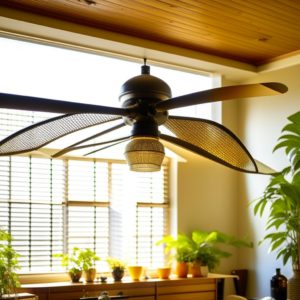 Beyond their cooling capabilities in summer, ceiling fans can be a valuable tool for maintaining a cozy atmosphere during winter. A simple adjustment in the fan’s rotation can significantly aid in redistributing warm air, enhancing overall comfort.
Beyond their cooling capabilities in summer, ceiling fans can be a valuable tool for maintaining a cozy atmosphere during winter. A simple adjustment in the fan’s rotation can significantly aid in redistributing warm air, enhancing overall comfort.
Understanding Ceiling Fan Rotation: Most ceiling fans are equipped with a motor that can be reversed, allowing you to change the direction of the blades. Set your fan to rotate clockwise during winter months. This adjustment creates an updraft that helps redistribute warm air that tends to collect near the ceiling back into the living space.
Warm Air Redistribution: Warm air naturally rises and accumulates near the ceiling in heated rooms. By setting the ceiling fan to rotate clockwise at a low speed, you can encourage this warm air to circulate back down, reducing heat stratification and maintaining a more consistent room temperature.
Striking the Right Balance: Achieving the optimal balance between fan speed and rotation direction is key to maximizing comfort. During winter, it’s generally recommended to set the fan on a low speed in a clockwise direction. This gentle rotation redistributes warm air without creating a draft that may feel too cool.
Complementing Your Heating System: Thoughtful use of your ceiling fan can enhance the efficiency of your primary heating source. Improved air circulation allows your heating system to function more effectively, which can lead to reduced energy costs and a more comfortable indoor environment.
Energy-Efficient Heating: With the ceiling fan’s ability to effectively circulate warm air, you may find that you can lower your thermostat temperature by a few degrees without sacrificing comfort. This energy-efficient strategy not only reduces heating costs but also lessens your environmental impact.
Ceiling Fan Size and Placement: The size and placement of your ceiling fan can influence its effectiveness in distributing warm air. Larger fans with wider blade spans may be necessary for larger spaces, and correct placement ensures even air circulation throughout the entire room.
Seasonal Transition: As the seasons change from winter to warmer months, remember to switch the fan’s rotation to counterclockwise. This setting encourages air circulation that supports the body’s natural cooling mechanisms, providing a refreshing breeze during hot weather.
Maintenance for Optimal Performance: Regular maintenance of your ceiling fan is essential for optimal performance. Dust buildup on the blades can hinder airflow and reduce efficiency. Take the time to clean the fan blades and ensure it operates smoothly throughout the year.
Enhance Comfort with Rugs and Carpets
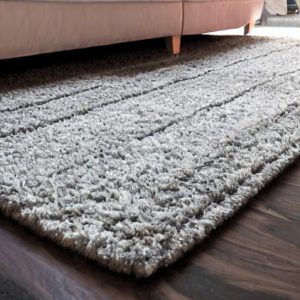 As winter sets in, chilly floors can create an unwelcoming atmosphere in your home. Investing in thick rugs or carpets is a simple yet effective
As winter sets in, chilly floors can create an unwelcoming atmosphere in your home. Investing in thick rugs or carpets is a simple yet effective
Earthquake-Proofing Home: Essential Tips and Techniques
Comprehensive Guide to Understanding Earthquake Risks What Are the Primary Causes of Earthquakes? Earthquake-Proofing Home: Earthquakes primarily result from the dynamic movement of tectonic plates situated beneath the Earth’s surface. These geological plates are in a constant state of flux due to various geological processes. When these plates collide, slide past one another, or drift […]
Blizzard Heat Retention: Essential Tips for Cold Weather
Comprehensive Guide to Maximising Heat Retention During Blizzards What Exactly Is Blizzard Heat Retention? Blizzard Heat Retention: Blizzard heat retention refers to a variety of methods and technologies specifically developed to maintain warmth during extreme winter storms, particularly severe blizzards. These intense snowstorms can lead to dangerously low temperatures and fierce winds, making it crucial to […]
Homemade Fire Starters: Easy DIY Solutions
Discover the World of Homemade Fire Starters What Exactly Are Homemade Fire Starters? Homemade Fire Starters: These are do-it-yourself (DIY) tools specifically designed to facilitate the ignition of fires with ease. Crafted from readily available household items, these fire starters are accessible to anyone who enjoys outdoor pursuits, camping adventures, or simply savouring a warm […]
Water Filter Maintenance: Essential Tips and Tricks
Significance of Consistent Maintenance for Water Filters Why is Consistent Maintenance Essential for Water Filters? Water Filter Maintenance: Maintaining your water filter is not just a recommendation; it’s a critical requirement for the overall health and efficiency of your household. Engaging in regular maintenance guarantees that your filter operates at peak performance, extends its lifespan, […]





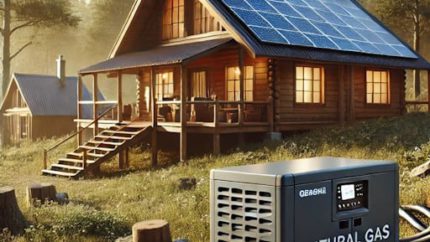
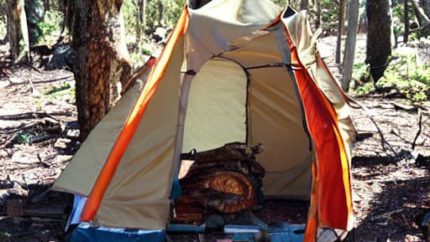
Sealing air leaks has been a game changer for me, especially in those drafty old windows. I’ve found that a simple strip of weatherproofing can really make a difference, not just in comfort but also in keeping my heating bill in check. Plus, it’s kind of satisfying to work through a home improvement task that pays off in the long run.
It’s great to hear that sealing those drafty windows has done wonders for your home! There’s definitely something satisfying about wrestling with weatherproofing tape and emerging victorious, like a DIY superhero. I mean, who knew that a simple strip could put a stop to sneaky drafts trying to sabotage our cozy winter vibes?
Sealing those air leaks really does feel like giving your home a cozy hug, doesn’t it? And let’s be honest, it’s nice not to feel like you’re starring in an outdoor adventure film every time you sit by the window. That satisfaction you get from tackling a home improvement task is like finding a five-dollar bill in your old jeans—small victory, but oh so rewarding!
I’m glad to hear it’s made such a difference for you! If you’re looking for more tips and resources to enhance your home’s energy efficiency, check out this helpful guide.
https://survivalbite.com/wild
Ah, the cozy winter wonderland—where the only snow we want is the glittery kind that decorates our homes, and the only frost we tolerate is on the windows (preferably not inside the house)! I can’t help but chuckle at the sight of my neighbor’s inflatable snowman, who seems to be living his best life while I’m fighting a losing battle with drafts that seem to just waltz right in like they own the place. Seriously, have you ever tried to negotiate with your windows? It’s like they just laugh at your pleas for warmth!
Your observation on the coziness of winter is spot on! It’s funny how we get all wrapped up in the beauty of it all, while our homes seem to have other plans. The drafts really do have a talent for sneak attacks, don’t they? I’ve had a few moments trying to outsmart my windows too, but it often feels like I’m taking on an undefeated champion.
It sounds like winter has brought its usual mix of charm and chaos to your doorstep. The way you describe your neighbor’s inflatable snowman really paints a picture. I can just imagine that cheerful guy, standing proudly despite the chill, while you’re over there playing detective trying to find the source of those drafts. Windows can be a real challenge; they have their own personalities, don’t they? It’s almost like they have a sense of humor when it comes to keeping the warmth in and the cold out.
You’ve captured the essence of winter so well. It does have this peculiar charm, doesn’t it? The softer light, the snowflakes that feel like they’re straight out of a snow globe. I find the contrast between the cozy indoors and the bleak outdoors really mesmerizing. That inflatable snowman is like a beacon of joy against the backdrop of the cold, isn’t it? I often wonder how many people stop to appreciate those small moments of cheer, especially when the days are so short and the temperatures drop.
It really does feel like winter brings out both the cozy and chaotic aspects of life, doesn’t it? Your mention of the inflatable snowman made me smile—I think there’s something wonderfully whimsical about those seasonal decorations. They seem to embody a kind of hope, standing resilient against the elements.
I really appreciate your focus on creating a cozy winter environment while being mindful of energy costs—it’s such a relevant topic as we face rising energy prices. I recently did a deep dive into my own home’s energy efficiency and was surprised to discover how much heat was escaping through poorly sealed windows. After addressing those air leaks, I noticed a significant drop in my heating bill!
It’s interesting how often we overlook the little things that can have such a big impact on our comfort and expenses, isn’t it? Poorly sealed windows are a common issue that many of us face without even realizing it. It sounds like you took the right steps by addressing those air leaks, and it’s always encouraging to see a noticeable improvement in something as vital as heating costs.
You’re so right—it’s fascinating how the smallest details can dramatically affect our daily lives. Poorly sealed windows might seem trivial, but they can really add up over time in terms of both comfort and expenses. I didn’t realize how much of a difference it would make until I finally took the plunge to fix them.
I love hearing your experience with the windows! It’s so easy to overlook those smaller things in our homes until they start affecting our comfort—or our wallets—more than we realize. Once you fix something like that, it’s like a light switch turns on—you wonder how you lived without it feeling right.
“Absolutely! It’s amazing how small changes can lead to big improvements. If you’re considering other upgrades, you might find this helpful resource on home efficiency tips!”
https://survivalbite.com/wild
I really resonate with your points on making our homes cozy while being mindful of energy costs. Last winter, I took a similar approach and found that sealing air leaks not only kept my heating bills in check but also made a noticeable difference in the overall comfort of my space. It’s like a warm blanket that wraps around you without the draft!
It’s really great to hear that you had such a positive experience with sealing air leaks. That sense of comfort really can change the game during those long winter months. It’s interesting how something as simple as sealing those tiny gaps can create a noticeable difference. It’s like, all of a sudden, your home feels much more like a retreat.
I love the focus on creating a winter wonderland while being mindful of energy costs. It reminds me of how little changes can make a huge difference, not just in our budget but also in our overall comfort. I recently started using thicker curtains to help insulate my windows better. Not only do they cut down on drafts, but they also add a cozy aesthetic to my living space.
It’s great to hear how your thicker curtains have made a difference. Those little upgrades often slip under the radar, but they really pack a punch in comfort and energy efficiency. Have you thought about layering those curtains with a thermal lining? It can enhance insulation even further without sacrificing style. Plus, playing with colors or patterns could give your space a fresh vibe for winter. Balancing aesthetics with practicality is always a fun challenge. How do you feel about mixing different textures to amp up that cozy feeling?
Creating a cozy atmosphere while keeping an eye on energy costs is such a practical approach. Your experience with thicker curtains is spot on. It’s interesting how often overlooked details can make our living spaces not just more comfortable, but also more efficient. Many people might initially dismiss curtains as just a decorative choice, but they really can transform a room both visually and functionally.
“That’s a fantastic tip about thicker curtains! If you’re looking for more creative ways to elevate your winter decor while keeping costs in check, check out these cozy ideas!”
https://survivalbite.com/wild
This is such a timely and helpful topic! As someone who loves to create a warm and inviting space during the winter, I find that little things make a big difference. I’ve recently invested in some heavy curtains, which not only add to the cozy vibe but also help insulate the windows. It’s amazing how much of a temperature difference that simple change can make!
It’s great to hear you’re creating that cozy atmosphere! Heavy curtains are such a smart move—not only do they block drafts, but they really do add an elegant touch to any room. I’ve found that layering textiles, like adding a soft throw or some decorative pillows, can really elevate that warm feeling, too. Have you also considered ambient lighting? Soft lamps or twinkling fairy lights can transform a space in the winter, making everything feel extra inviting. Just a few tweaks can make your home feel like a snug retreat when it’s chilly outside.
I’m so glad you found the article helpful! Those heavy curtains are a fantastic choice for both warmth and style. If you’re looking for more ideas to enhance your cozy winter space, check out this guide for some great tips!
https://survivalbite.com/LostFoods
I really appreciate how this blog post highlights the importance of creating a warm and inviting atmosphere during the winter months, especially when energy costs can be a major concern for many of us. I’ve found that aside from the practical measures like sealing air leaks and adding insulation, there’s something almost magical about how we can make our homes feel cozy through thoughtful decoration and ambiance.
Your exploration of creating a cozy winter environment while managing energy costs resonates with many of us who are balancing comfort with budget considerations. The issue of air leaks, in particular, is often underestimated in its impact on overall heating efficiency. In my own experience, I found that taking the time to properly insulate windows and doors not only made a noticeable difference in my home’s warmth but also contributed to a significant reduction in energy bills. Investing in weatherstripping and caulking has proven to be both a cost-effective and impactful solution.
It’s interesting how the smallest details in our homes can have such a major impact, isn’t it? Your experience with insulating windows and doors highlights a crucial aspect that many overlook. Air leaks really do play a significant role in how comfortably we can maintain our indoor environments, and, as you noted, they can directly affect our energy costs.
“Thank you for sharing your experience! If you’re looking for more tips on keeping your home cozy while saving on energy costs, check out this resource on effective insulation solutions.”
https://survivalbite.com/wild
Creating that cozy winter environment while keeping energy costs in check is a bit of an art, isn’t it? Your experience with air leaks really captures a crucial detail that often gets overlooked. Many people don’t realize just how much those little gaps around windows and doors can affect both comfort and expenses. It seems simple, but sealing up those leaks can transform a chilly drafty space into a warm haven.
“I’m glad to hear your insulation efforts have paid off! If you’re looking for more tips and resources to enhance your home’s energy efficiency this winter, check out this helpful guide.”
https://survivalbite.com/LostFoods
Your insights into creating a cozy winter wonderland while being mindful of energy costs resonate deeply with many of us as we enter this chilly season. I often find myself feeling the push and pull of wanting to keep my home warm and inviting while also being conscious of the rising heating bills that come with it. It’s a familiar dilemma, especially for those of us who want to maintain a comfortable living space without compromising our financial stability.
Creating that cozy winter atmosphere while managing heating costs is definitely a balancing act many of us are grappling with. One approach I’ve found helpful is to layer warmth without cranking up the thermostat too high. Think about adding textured blankets, thick curtains, and rugs to retain heat. You can also explore local options for draft stoppers to keep that cold air at bay.
I completely resonate with the idea of creating a cozy winter retreat at home while being mindful of energy costs. Last winter, I took it upon myself to tackle air leaks, and what a difference it made! I started with simple things like checking windows and doors, but I was surprised to find gaps I never noticed before, especially in older homes.
It’s interesting how tackling those little air leaks can make such a noticeable difference in how our homes feel during winter. It sounds like your experience last season really transformed your space into a more inviting and comfortable retreat. I think many of us underestimate how much those drafts can impact both our comfort and our energy bills.
Your insights on creating a winter wonderland while being mindful of heating costs resonate deeply, especially as I’ve been grappling with the seasonal shift in energy bills myself. The emphasis on identifying and sealing air leaks as a means to improve energy efficiency is particularly timely. In previous winters, I’ve experienced firsthand how much of a difference this can make. A couple of years ago, my family and I took the initiative to weatherstrip our windows and doors—a relatively simple DIY task that surprisingly reduced our heating needs significantly.
Your discussion on creating a cozy winter environment while being mindful of energy costs resonates deeply with many of us facing rising utility bills. The suggestion to identify and seal air leaks is particularly timely. I recently undertook a weekend project to address drafts around my windows and doors, and the difference in both warmth and energy efficiency was remarkable. Not only did it make my living space more comfortable, but it also gave me peace of mind knowing I was reducing my carbon footprint.
Ah, the battle against winter’s chill and rising heating bills—it’s like a game of hide-and-seek, but the game is played with your sanity. I totally relate to this post! I remember one winter I decided to be proactive and seal up air leaks in my house. Armed with a roll of weather stripping and a couple of cans of spray foam, I felt like a superhero. Little did I know, I’d end up sealing off an entire sock factory because I found so many lost treasures (my some-might-call-it-ghosts-but-I-call-it-socks) wedged in the most unexpected crevices.
It sounds like you’ve had quite the adventure with DIY winter prep and your sock sleuthing! It’s honestly kind of amazing how much stuff can accumulate in our homes, especially in those little nooks we rarely think about. I can relate to that feeling of being a superhero with a mission—there’s something really satisfying about taking charge of your space.
Your sock factory adventure sounds both hilarious and oddly relatable. It’s wild how those small nooks and crannies can hold so many long-lost treasures that we’d forgotten about. Finding a rogue sock in a place you least expect definitely makes sealing up air leaks feel like a treasure hunt.
“Sounds like you had quite the adventure! If you’re looking to tackle that winter chill more effectively (and maybe find a few more hidden treasures), check out these expert tips and tools for sealing your home snugly.”
https://survivalbite.com/LostFoods